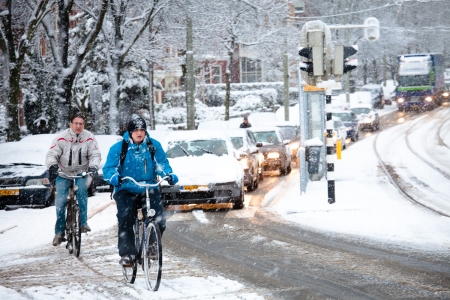Nowadays, the road safety effect of the weather is different from 10, 20 years ago. This is mainly due to technological developments. New technologies not only increase the opportunities to avoid exposure to bad weather conditions (possible effect on mobility), but also to better cope with bad weather conditions (possible effect on risk). This means that the results of older research on the effect of adverse weather conditions are not straightforwardly applicable to the current situation. It is therefore important to use recent literature whenever possible and to keep these developments in mind when interpreting research results.
Potential effect on mobility
Innovations based on information technology have taken off in recent years. Think of innovations in vehicle technology, and within the weather context especially the local short-term weather forecast on phones. Whereas precipitation ('bad weather') used to be something that just happened to road users, it is now much more predictable by weather apps on smartphones. This may affect exposure to bad weather: 'We had better go in 15 minutes, a shower is coming... .' The effect of these apps on road safety is unlikely to be the same for all road users. For cyclists and pedestrians, the threat of a shower is probably more reason to stay at home or leave later, than for drivers. Less travelling in bad weather will reduce the effect of bad weather on the number of casualties.
Possible effect on risk
Technological developments are also expected to have an effect on the risk of adverse weather conditions, that is, on how much more dangerous traffic participation is in bad weather than in good weather. For motor vehicles in particular, major advances in technological support for drivers have been made in recent decades. These include Cooperative Adaptive Cruise Control (C-ACC), Lane Departure Warning (LDW) and Autonomous Emergency Brake (AEB) systems (see SWOV fact sheet Intelligent transport and advanced driver assistance systems (ITS and ADAS)). They prevent crashes, including crashes in bad weather. This kind of development implies that more recent research should show a lower crash rate in bad weather than older research.
